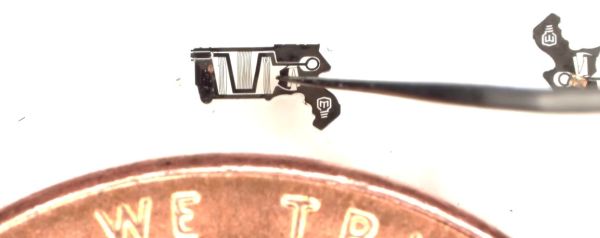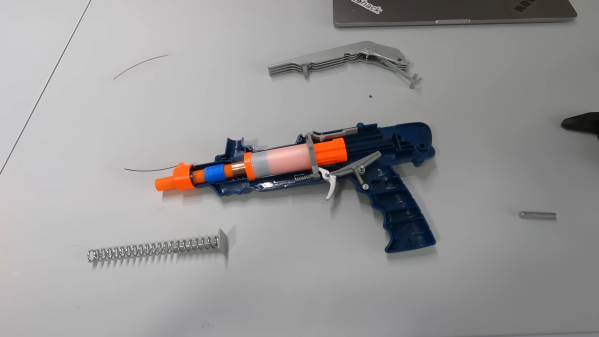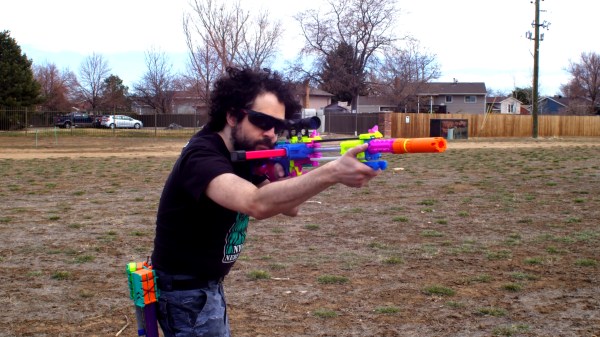Nerf blasters have been around for decades now, exciting children and concerning parents alike. Most are powered by springs or compressed air, and are the ideal holiday toy for putting delicate family heirlooms at risk. Not content to settle for the usual foam-flinging sidearm, [Peter Sripol] decided to take things up a notch.
The build starts with a MEGA CYCLONESHOCK blaster, which uses the larger red NERF darts as ammunition. Water tanks are rigged to the outside, fitted with stainless steel electrodes. The original spring & plunger firing assembly is then removed, to make room for a firing chamber made out of copper pipe. A small taser-like device is used as an igniter. When the charging switch is pressed, current is passed through the electrodes in the water, which splits the water into hydrogen and oxygen gas. This is then passed to the firing chamber, where it can be ignited by the taser module, activated by the trigger.
Despite some issues with the blaster occasionally destroying darts due to what appears to be overpressure, it is capable of higher shot velocities than the stock blaster. For all its complexity, performance is somewhat hit and miss, but the cool factor of a handheld hydrogen bubbler is hard to ignore. [Peter] does note however that the combination of explosive gases and dangerous catalyst chemicals make this one build that’s probably best left to adults.
If this NERF hack isn’t dangerous enough, you might prefer these Taser darts instead. Video after the break.
[Thanks to Baldpower for the tip!]
Continue reading “Hydrogen Powered Nerf Blaster Is Dangerously Awesome” →


















